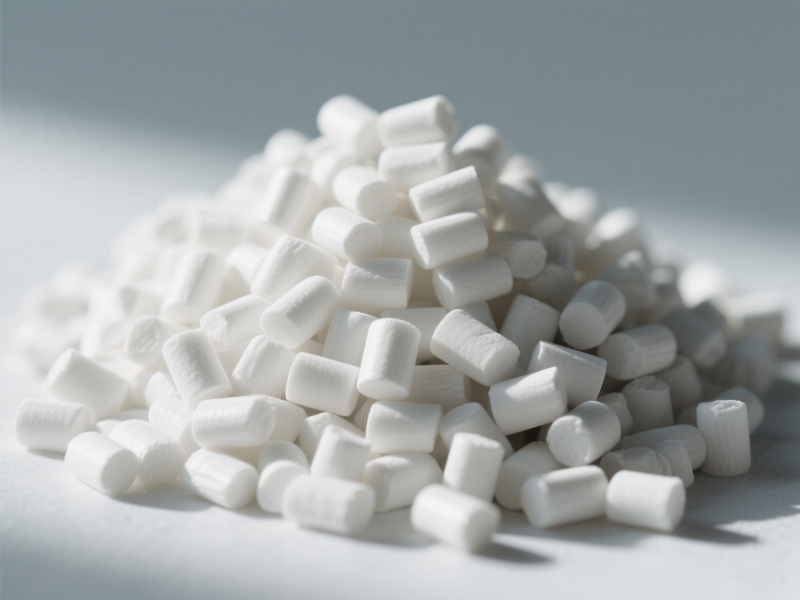Before We Dive In...
If you’ve spent any time in rubber compounding, you’ll know that even the tiniest ingredient—by percentage or volume—can completely shift how a rubber compound behaves. Zinc oxide is one such ingredient. It may not get the spotlight, but it plays a crucial role in vulcanization. And when it comes in the form of ZnO-80, that role becomes a lot more refined.
We’ve worked with both traditional ZnO powders and modern pre-dispersed versions, and if I had to describe the difference in one word, it’d be control. ZnO-80 offers a level of process control and consistency that powder doesn’t match. But let’s not get ahead of ourselves. Let's unpack this properly.
What is ZnO-80?

ZnO-80 is a pre-dispersed form of zinc oxide, typically containing 80% active ZnO and 20% of a carrier polymer—often EPDM or SBR-based—designed specifically for rubber compounding. It comes in the form of soft pellets or pastilles, which are dust-free and ready to blend directly into your rubber mix.
At first glance, it might just seem like another way to deliver zinc oxide into the system. But dig a little deeper, and you'll see why more compounders are moving away from powders and toward pre-dispersed masterbatches like ZnO-80.
Key characteristics of ZnO-80 include:
▪ High dispersion quality even in low shear mixing systems
▪ Accurate dosing, with no weighing error due to clumping or dust loss
▪ Lower environmental impact compared to high-dosage raw zinc oxide
▪ Thermal stability during processing
And it’s not just about convenience—it’s also about meeting modern performance and compliance standards without sacrificing processing efficiency.
Why is ZnO-80 Used in Rubber Compounding?
Here’s the deal: zinc oxide is a vulcanization activator, and it works in tandem with stearic acid and accelerators to form the active sulfurating agent that crosslinks rubber chains. That’s the core science. But in the real world—on your mixing line or in the final rubber properties—how that ZnO is delivered makes a world of difference.
So, why do compounders increasingly reach for ZnO-80 instead of traditional ZnO powder?
Better Dispersion in the Matrix
In NR, SBR, and EPDM systems, poor dispersion of ZnO can lead to inconsistent cure rates and localized overcure. ZnO-80 solves this by arriving in a polymer-compatible carrier, which disperses evenly—no fighting clumps or powder pockets.
Improved Process Cleanliness
No more white dust everywhere. Seriously, if you’ve ever cleaned zinc oxide residue off a mixer or tried to avoid inhaling it while loading, you’ll appreciate this one. ZnO-80 pellets are dust-free and reduce airborne particle concerns drastically—especially important in open mixing mills.
Enhanced Cure Efficiency with Lower Dosage
Due to its high active ZnO content and better distribution, ZnO-80 often allows lower total zinc loading without sacrificing performance. This helps with both cost and environmental compliance, particularly when customers are asking about REACH, RoHS, or other zinc content restrictions.
Batch-to-Batch Consistency
When you're running production at scale, the last thing you want is a curing curve that changes week to week. Pre-dispersed ZnO delivers more predictable kinetics, helping avoid under- or over-curing—especially critical in multi-component systems like EPDM where peroxides or dual cure systems might also be at play.
How ZnO-80 Differs from Other Zinc Oxide Powder?
Let’s get specific. ZnO-80 isn’t just “zinc oxide in a different shape.”
It changes the game in several key ways:
| Property | ZnO Powder | ZnO-80 |
| Form | Loose, fluffy powder | Soft pellets or pastilles |
| Handling | Dusty, prone to spills | Clean, low-dust, easy to dose |
| Weighing accuracy | Inconsistent at low volumes | High-accuracy dosing |
| Dispersion | Requires high shear | Disperses evenly in standard mixers |
| Health/Safety | Inhalation risk, messy | Safer and cleaner for workers |
| Environmental Load | Higher total usage | Lower zinc usage with same effect |
| Process Consistency | Prone to variation | Highly consistent across batches |
From a technical perspective, one of the main performance benefits lies in particle size and distribution uniformity. Pre-dispersed ZnO-80 doesn’t agglomerate like powders tend to. That leads to faster, more complete vulcanization, particularly helpful in SBR tread compounds or EPDM weatherstrips that require tight cure windows.
In short: ZnO powder might have been fine a decade ago, but if you’re looking to tighten specs, reduce zinc levels, or clean up your production environment—ZnO-80 is already where the industry is heading.
Wrapping Up
We could throw in a tidy conclusion here, but honestly, if you’re formulating or producing rubber goods in 2025 and beyond, efficiency and compliance aren’t optional anymore—they're expectations. ZnO-80 just makes things easier. Cleaner lines. Smoother mixing. Lower zinc. Better performance. Is it more expensive than powder on a per-kilo basis? Sure. But look at what you save—in time, in rework, in filler loss, in downstream consistency. Rubber compounding isn’t about guessing anymore. It’s about control. And ZnO-80 gives you a whole lot more of it.
 cwc@jxbh-masterbatch.com
cwc@jxbh-masterbatch.com 자싱 베이화 폴리머 보조제 유한공사 / 상하이 크리스탈 웰스 화학 신소재 유한공사 / 상하이 크리스탈 웰스 화학 신소재 유한 회사.
자싱 베이화 폴리머 보조제 유한공사 / 상하이 크리스탈 웰스 화학 신소재 유한공사 / 상하이 크리스탈 웰스 화학 신소재 유한 회사.
































